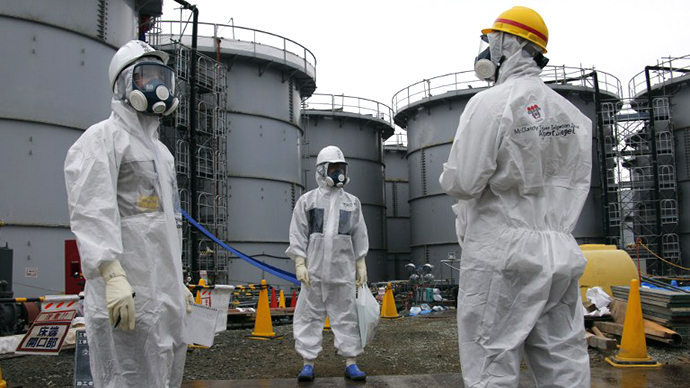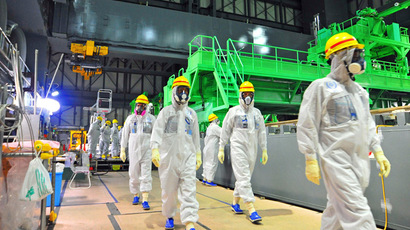Radiation at Fukushima well hits ‘record high’

A record high level of beta rays released from radioactive strontium-90 has been detected at the crippled Fukushima nuclear power plant beneath the No. 2 reactor's well facing the ocean, according to the facility’s operator.
Tokyo Electric Power Company (TEPCO) measured the amount of beta ray-emitting radioactivity at more than 2.7 million becquerels per liter, Fukushima’s operator said as reported in Japanese media. The measurements were taken on Thursday.
There has been a spike of radiation in this area since the beginning of the year. The measurements taken on Monday showed 2.4 million Bq/l, while the results taken on January 9 indicated the amount of beta rays at 2.2 million Bq/l, according to TEPCO’s Friday announcement.
Strontium-90 is a radioactive isotope of strontium produced by nuclear fission with a half-life of 28.8 years. The legal standard for strontium emissions is 30 becquerels per liter.
In March 2011 an earthquake triggered a tsunami that hit Japan’s coast, damaging the Fukushima Daiichi nuclear power plant. The catastrophe caused the meltdown of three nuclear reactors at the facility, leading to the worst nuclear disaster since Chernobyl.
The water used to cool the reactors has been leaking into the
soil and contaminating the ground water ever since. Some of the
radioactive water has been escaping into the Pacific Ocean.
TEPCO plans solve the problem by setting up special equipment to
freeze the ground around the reactors. The works which are to
start this month include plunging tubes carrying a coolant liquid
deep into the ground. The coolant would freeze the ground solid
so that no groundwater could pass through it.
Japan plans to restart world’s biggest nuclear plant
While the company struggles to contain the contaminated water,
TEPCO’s president has voiced the possibility of spinning off the
clean-up project at the wrecked Fukushima nuclear plant from the
rest of the company. This would be an option in the future if the
decommissioning runs smoothly, Naomi Hirose said in an interview
to Reuters on Saturday.
A spin-off was also proposed by the ruling Liberal Democratic
party’s committee overseeing the government bailout of TEPCO in
October.
Hirose noted that currently TEPCO has to work on improving the
workers conditions at the plant.
"Paying compensation (to evacuees), decontamination, and the
work at the Fukushima plant; there is a lot of work to be done
... We have to continue doing this, while maintaining workers'
safety, their sense of responsibility, duty and keeping up their
morale," he said.
The company’s head added that he was against hiving off the
Fukushima decommissioning from the rest of the business until
working conditions improve significantly.
On January 15 the government approved TEPCO’s plan to restart
four reactors at the Kashiwazaki-Kariwa nuclear power plant, the
biggest nuclear power plant in the world. The utility aims to
resume operations at the plant's No. 6 and 7 reactors as early as
July.
The plan was met with criticism from the administration of the
Niigata Prefecture, where the plant is located. The local
governor has repeatedly called for the company’s liquidation.
TEPCO argued that the company may have to raise electricity
prices by as much as 10 percent if Kashiwazaki restart is further
delayed.














